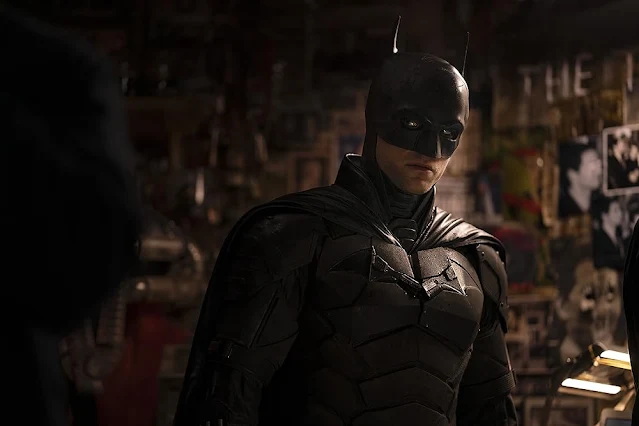At the core of this enigmatic character lies a theme that has fascinated audiences for decades: the duality of Batman and Bruce Wayne. This duality is not just a clever narrative device but a lens through which we can explore complex psychological and societal issues. The objective of this essay is to delve into the intricate duality of Batman/Bruce Wayne as portrayed in comics and films.
Through a detailed analysis, we aim to understand how this theme has evolved over time and what it reveals about the character and, by extension, about us.
The duality of Batman/Bruce Wayne is a complex and enduring theme that has captivated audiences for decades. Through various eras in comics and interpretations in films, this duality has been explored, dissected, and reimagined, each time adding new layers of depth to the character. Psychological theories like Freudian and Jungian psychology offer valuable frameworks for understanding this duality, while the societal impact of Batman's character raises important questions about justice, morality, and identity.
Batman made his debut in "Detective Comics #27," initially conceived as a dark vigilante inspired by pulp heroes like The Shadow. Over the years, the character has undergone numerous transformations, each reflecting the tastes and sensibilities of different eras.
The concept of duality, which has been a subject of interest in literature and psychology for centuries, provides a rich backdrop for understanding Batman. This theme allows us to delve deeper into the psyche of Bruce Wayne, the man behind the mask, and Batman, the symbol he becomes.
In the Golden Age of comics, Batman was a grim vigilante, a stark contrast to his alter ego, Bruce Wayne, the wealthy socialite. Bruce Wayne was essentially a façade, a means to divert attention away from his nocturnal activities as Batman. For example, in "Detective Comics #33," the origin story of Batman is revealed for the first time, highlighting Bruce Wayne's transformation into Batman as fueled by his desire for justice.
The Silver Age introduced a lighter tone, with Batman becoming a deputized lawman who worked closely with the Gotham City Police Department. In "Batman #109," Batman officially becomes a lawman, signaling a shift in how his duality is portrayed. Bruce Wayne's socialite persona becomes more integrated with Batman's role as a law enforcer.
The Modern Age returned Batman to his darker roots but added layers of psychological complexity. Writers like Frank Miller and Alan Moore explored the psychological toll of being Batman, making Bruce Wayne's persona equally important. In "Batman: Year One," Frank Miller delves into the psychological aspects of Bruce Wayne and Batman, showing the sacrifices Bruce makes to become the Dark Knight.
Tim Burton's films brought Batman to the big screen in a significant way, blending gothic elements with psychological depth. In "Batman Returns," Bruce Wayne and Selina Kyle (Catwoman) discover each other's secret identities, forcing Bruce to confront the duality of his life as both a hero and a man capable of love and vulnerability.
Christopher Nolan's trilogy took a more realistic approach, grounding Batman in a world that felt closer to our own. "Batman Begins" explores the concept of fear as both a weapon and a weakness. Bruce Wayne must conquer his own fears to become Batman, but he also uses fear to intimidate criminals.
In the DCEU, Batman is portrayed as a battle-hardened veteran, skeptical of both human nature and the idea of justice. In "Batman v Superman: Dawn of Justice," Batman is willing to kill Superman to protect humanity, showing a darker, more morally ambiguous side to the character.
Both comics and films delve into Batman's psychological depth and moral complexity. However, the tone and public perception differ between the two mediums, influenced by different eras and creators. For instance, Frank Miller's "The Dark Knight Returns" offered a gritty, complex Batman, while Christopher Nolan's "The Dark Knight" presented a Batman grappling with ethical dilemmas in a world of chaos.
Freudian and Jungian theories offer frameworks for understanding Batman's duality. Freud's concepts of ego, superego, and id, as well as Jung's ideas of shadow and persona, provide nuanced insights into the character's complexities. For example, Batman can be seen as the id, acting on instinct and emotion, while Bruce Wayne serves as the ego, the rational part that mediates between the primal desires of the id and the moral compass of the superego.
Harvey Dent, or Two-Face, serves as a compelling parallel to Batman. Both characters struggle with ethical dilemmas and public perception, and Harvey's transformation into Two-Face serves as both a contrast and a warning to Batman. For example, in narratives where Harvey Dent serves as a foil to Batman, his character highlights the fragility of the line that Batman walks between his dual identities.
Batman's duality raises questions about justice, morality, and identity, making him a versatile tool for exploring complex societal issues. His character serves as a mirror reflecting societal views on justice, morality, and identity. For instance, Batman's role as a vigilante raises questions about the limitations of our justice system and the ethical implications of vigilante justice.
The duality of Batman/Bruce Wayne is a complex and enduring theme that has captivated audiences for decades. Through various eras in comics and interpretations in films, this duality has been explored, dissected, and reimagined, each time adding new layers of depth to the character. Psychological theories like Freudian and Jungian psychology offer valuable frameworks for understanding this duality, while the societal impact of Batman's character raises important questions about justice, morality, and identity.













